Calculus for Kids May 10, 2015 (Sundays)
This is the story of the fourth meeting of Sunday Natural Math Circle doing activities inspired by calculus. We started by reviewing some past “book art” style objects that transformed between 2D and 3D, like the spaceship…
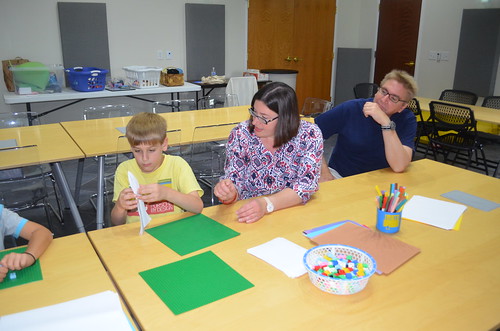
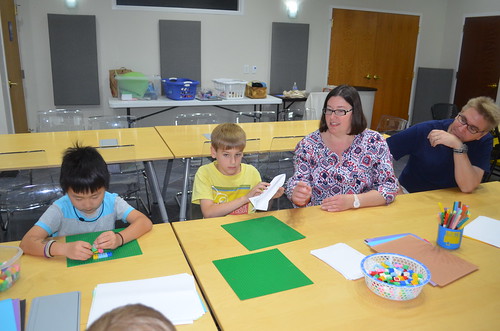
…And the spherical paper decoration Eli opened.
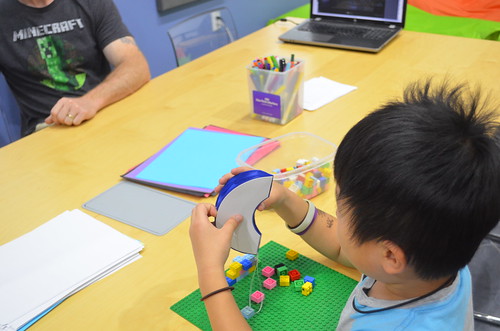
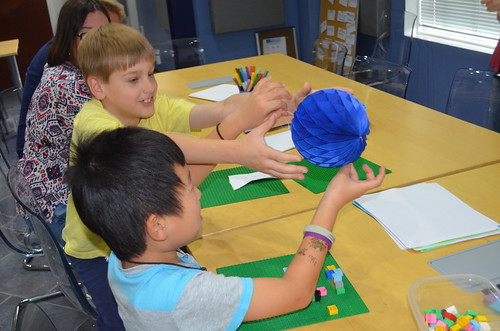
Moving on to the next experiment: approximating circles. Start with a piece of plain rectangular paper (in your favorite color of course).
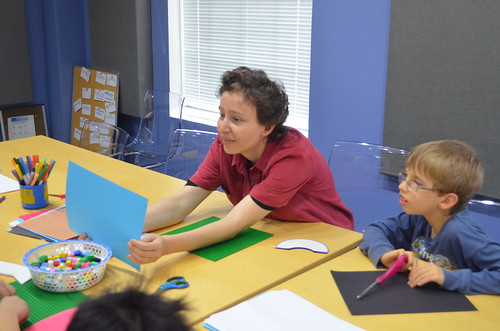
Fold it in half twice: along the length and along the width.
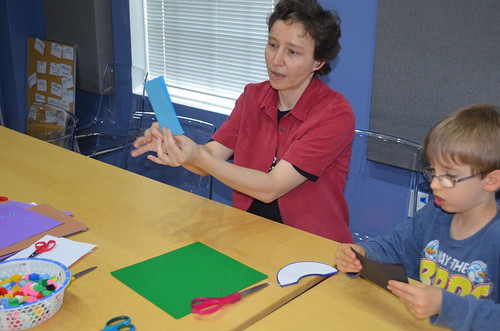
Mark the corner that’s in the center of the paper.
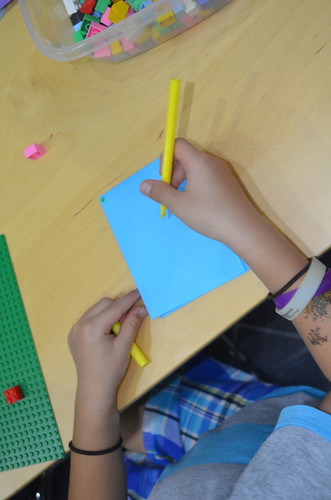
Fold the sides adjacent to that corner to one another, making a triangle.
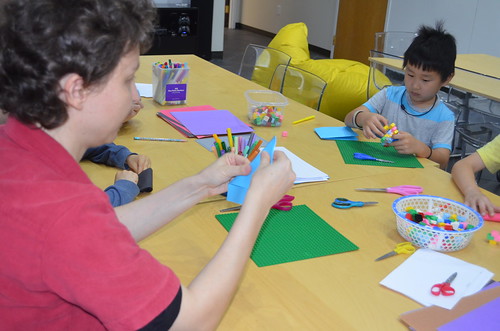
Fold through that corner again, making a smaller triangle. It’s hard to fold that many layers!
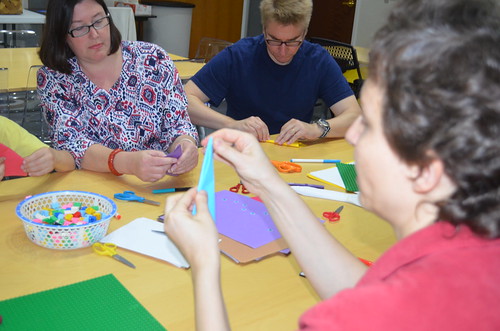
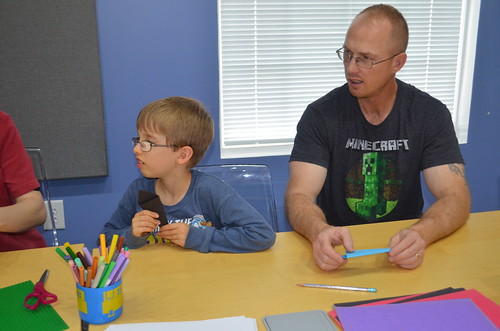
Now for cutting: Maria and Chris are helping Mark by holding his paper still. What shape will we get?
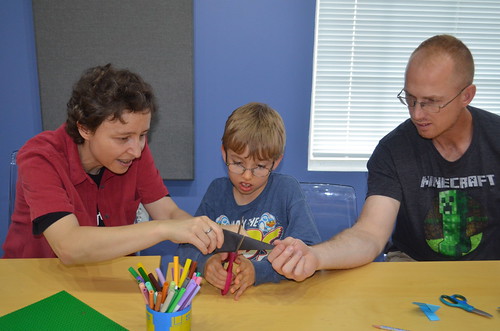
Parents are doing the activity for themselves!
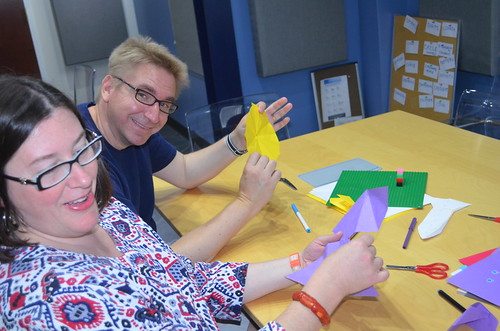
Something funny happens if you fold through a corner that isn’t the center of your paper.
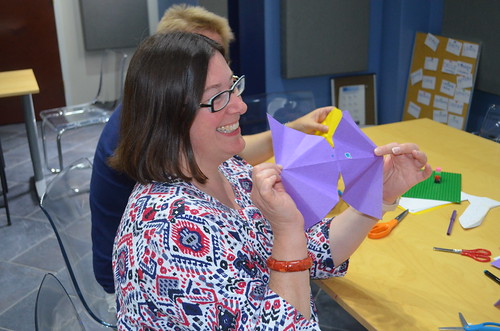
The results approximate circles. Eli’s approximate circle transforms into a nice hat.
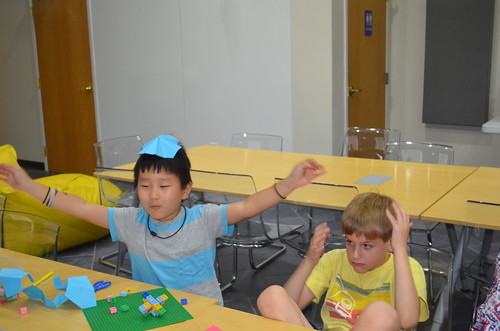
Cut it again into a smaller shape. What shape do we get when we unfold it? Is it the same shape (an approximate circle)?

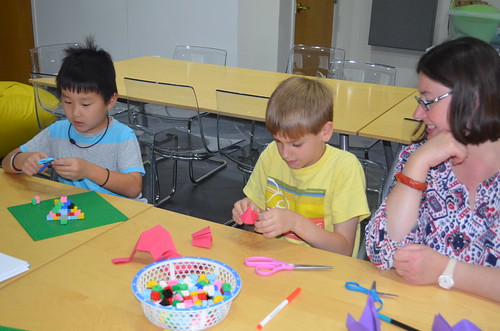
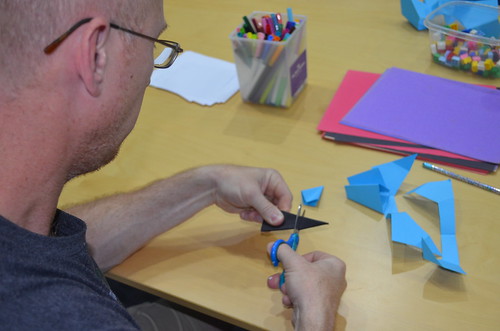
Here comes the challenge – a different way to approximate circles. Use these small circles as a template to build LEGO circles on top of them. Maria: “You figure it out as you go along!”
Our other group tried to build LEGO circles, but they mostly stopped at squares and diamonds and called that “good enough approximations.” We thought that moving off the big LEGO board and onto paper can nudge children into thinking outside of the box. Or outside of the grid, as the case may be.
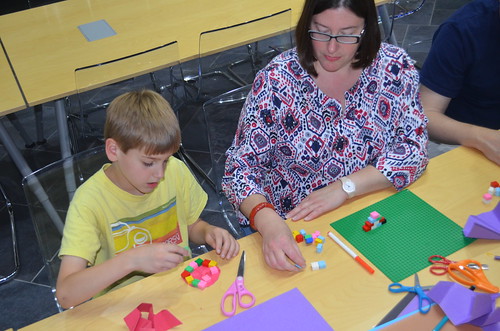
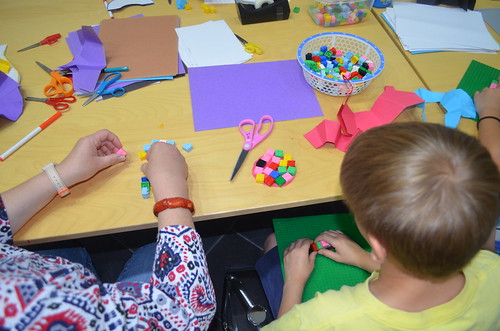
It worked! Whether the circle was covered in a random way (above) or in a systematic way (below), the LEGO pieces aren’t on the grid anymore.
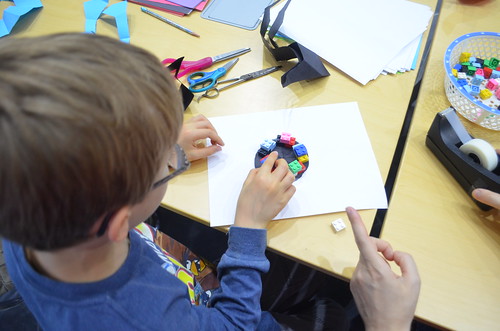
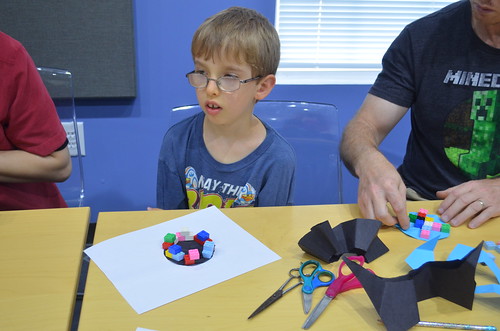
Parents’ math faces, contemplating:
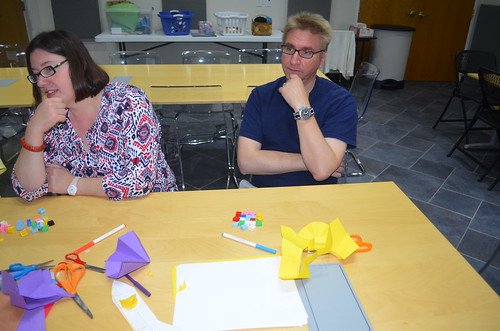
Maria’s LEGO circle:
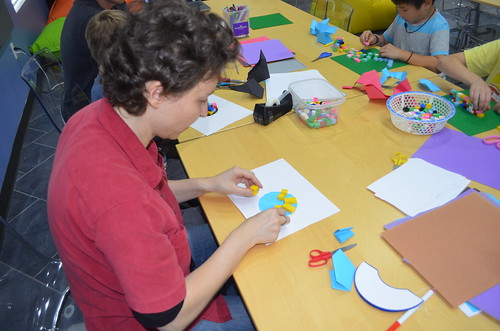
Next, Maria shared a way of building circles out of parallel strips. It’s an important method that did not come up among the children. In a larger group it might have – or, if we used craft sticks instead of LEGO blocks. Something to try next time.
Maria and Mark are drawing lines using a plank built out of LEGO as their ruler:
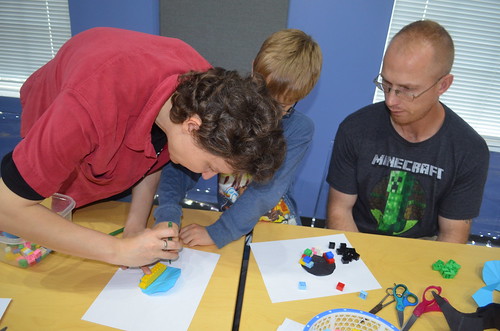
The result is that the circle is split into parallel stripes:
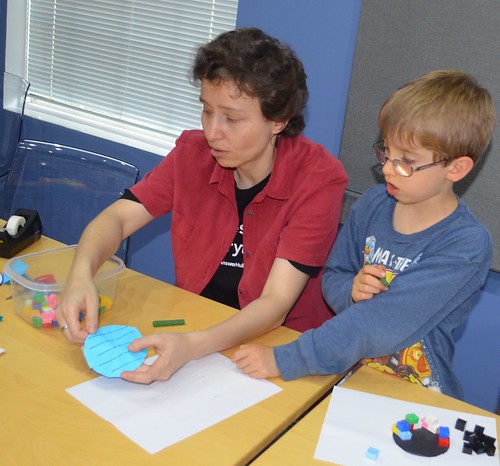
Eli: “Oh yes!”
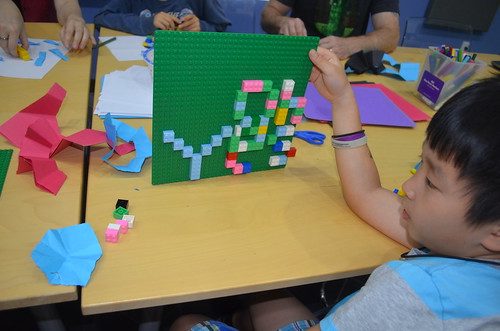
The letter O started as an approximation of a circle, then grew into a phrase. Eli would show this sign whenever somebody made progress or finished a project. A great way to cheer for your colleagues!
Maria cut the circle into stripes and gave one to each person. For each stripe, people built a LEGO plank.
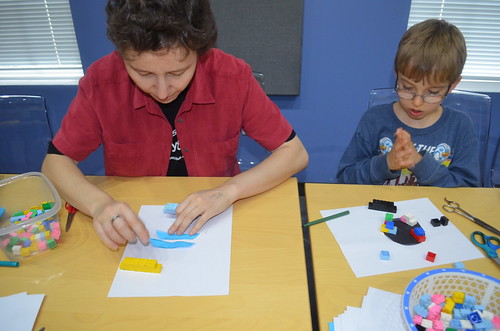
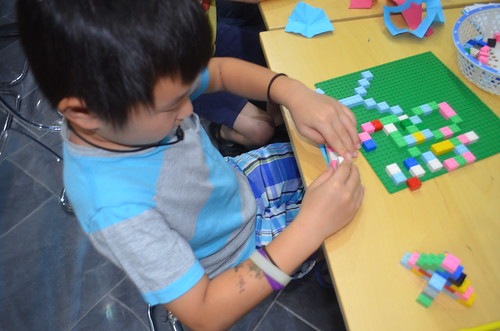
Then we put all our planks together – integrating a circle.
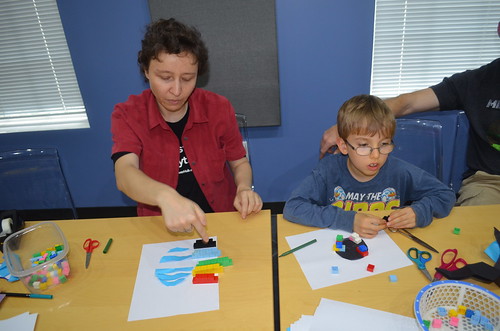
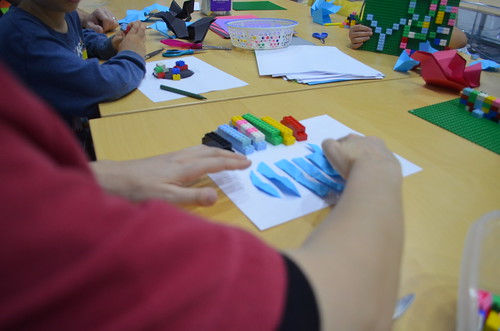
Oh yes!
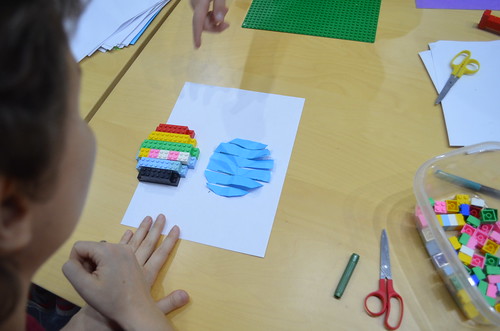
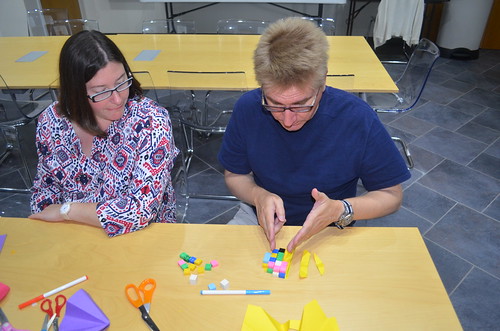
Children said our LEGO circle would be so much better if only we could make it really big (or the blocks really tiny… but that’s harder). When asked, they all wanted to try and make a really big circle. To do so, we taped four papers together.
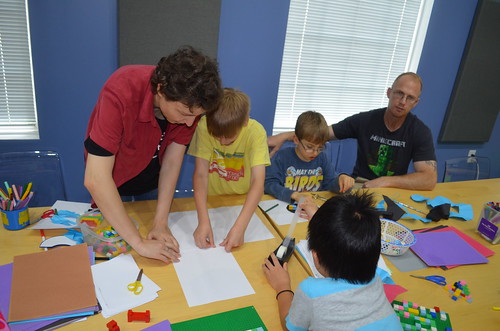
How could we draw a circle? By folding it like we did earlier, or simply by drawing? (Nice try drawing, Eli!)
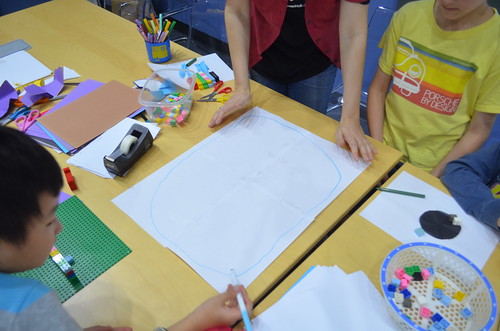
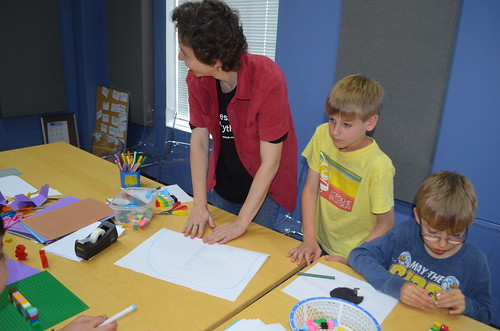
Find the center and draw a dot.
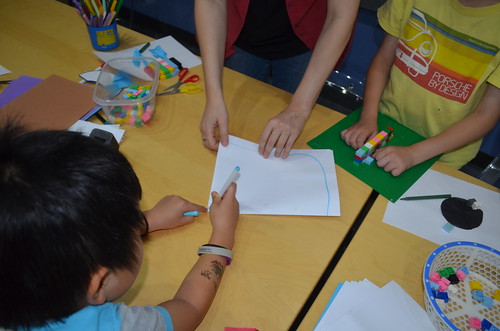
Fold one more time.
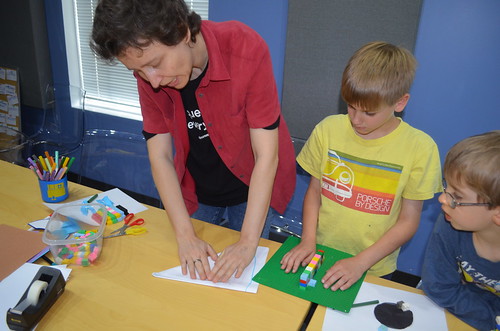
Cut! We got a triangle.
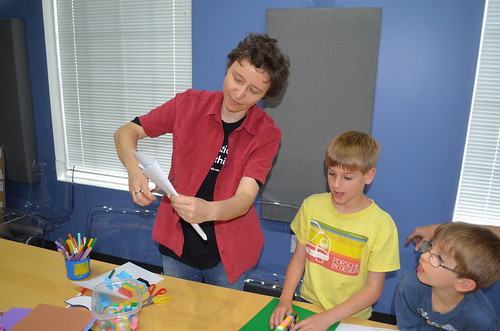
It’s like a cone… for blueberry ice cream.
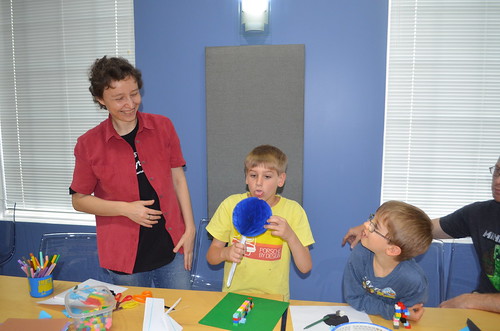
Back to the integration:
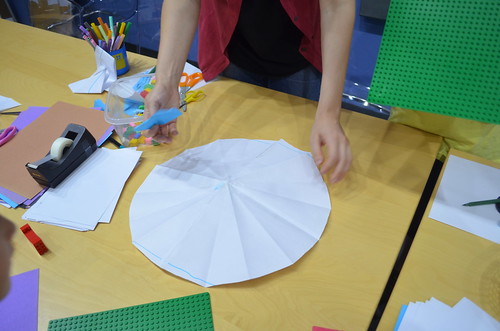
We started to fill the big circle with planks as before, but that turned out to be a lot of work.
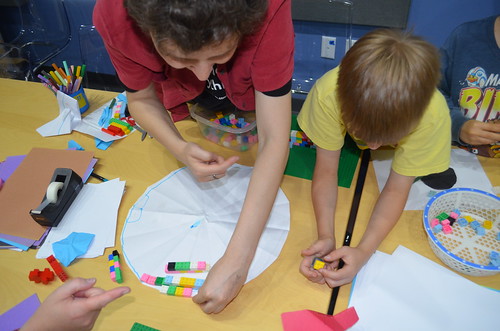
So we filled the middle with the big square block:
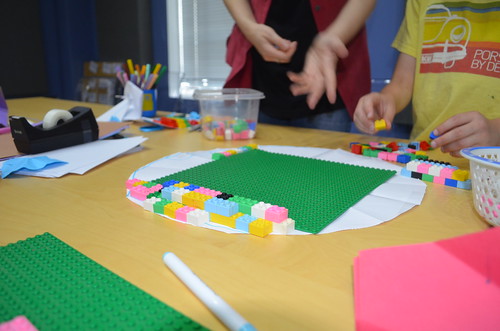
Serious team building:

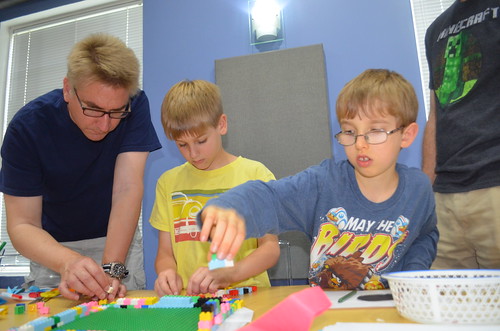

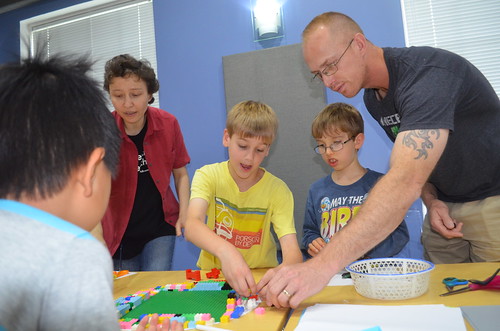
Checking the LEGO circle from the bird’s eye view:
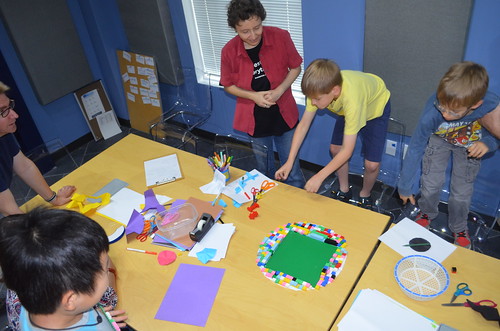

What do you notice about that big circle? A triangle? Any patterns?
Children attempted to find patterns in colors of blocks around the circle, but that turned out to be random. Then Eli alternated between two neighboring single-color planks, naming the colors: green-blue-green-blue-green-blue… Everybody laughed.
Snack time. Slicing and reassembling apples and bananas (shapes out of shapes):

Guess what shape the cuts will be when we look at them from the side. There are problems like that in drafting and 3D modeling.
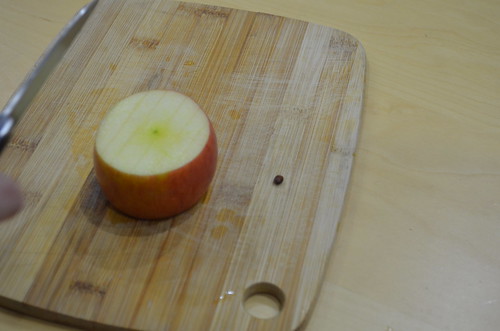
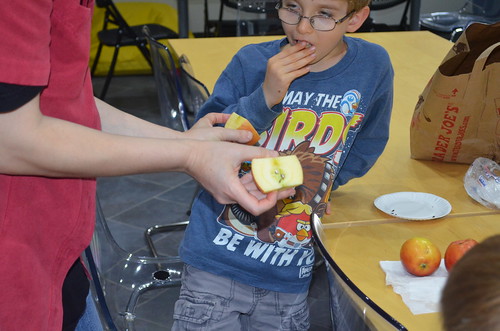
When I slice this banana what will we see? Once we slice it, can we straighten it?

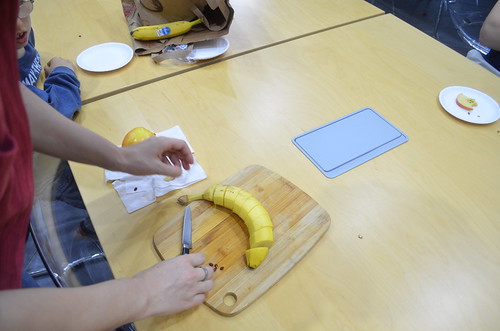
One way to straighten: with wedge-shaped gaps on one side.

Another way to straighten: turning every other piece 180 degrees:
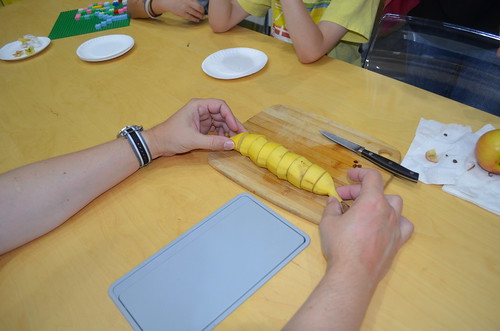
A cabbage is an excellent example of a shell integration. It was interesting to just take it apart and then put it back together. Everybody got a wedge to try doing that.
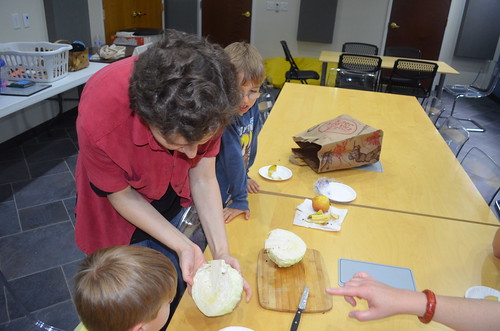

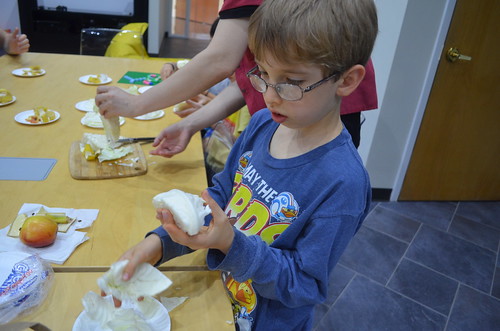
Look around: shapes out of shapes (integration) is everywhere – blinds, light fixtures, woven fabric…

Photos by Erin Song, captions by Erin Song and Maria Droujkova, Math Spark by Kalid Azad, Shelley Nash, and Maria Droujkova, edited by Ray Droujkov.
Related Posts
Posted in Make







Leave a Reply